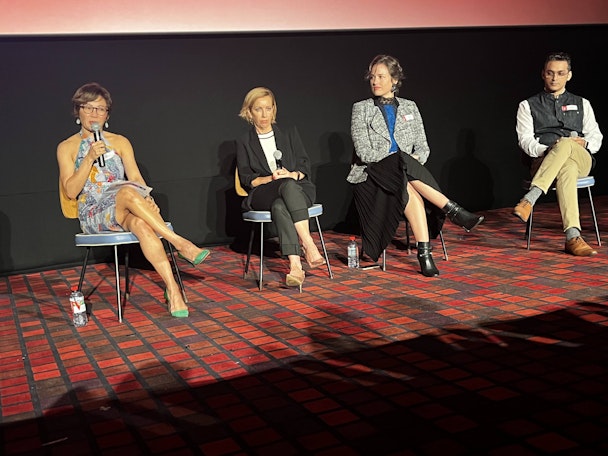DE&I initiatives can drive commercial success but brands must get uncomfortable first
Diversity, inclusion and equity initiatives are driving commercial success at Mastercard, according to Julie Nestor, senior vice president, head of marketing & communications, Asia Pacific.

Singapore-based experts from R3, Mastercard, Accenture and Amazon discuss the DE&I challenges
Speaking on a DE&I panel at The Drum’s APAC Trends Briefing event, Nestor shared how Mastercard’s work to create an inclusive business had gone beyond altruistic ideals and resulted in financial benefits for the organisation.
“Without commercial success, it becomes very challenging to drive the agenda. And luckily, for us, it's been driven top down for at least the last 10 years, but we've also been able to demonstrate financial benefit from it.”
Advertisement
Product redesigns for inclusion
Nestor believes there are three areas that marketers can focus on to help promote DE&I initiatives: Product design, localising assets and identifying audiences that are being excluded.
Nestor shared details of inclusion-led products that had helped drive commercial success, such as Mastercard’s True Name product, which saw the corporation change its regulations and designs around the name which appears on people’s bank cards in order to be more inclusive.
“The product idea was actually born from a real example of one of our agency people who had transitioned and had changed genders. But his credit card showed his birth name. And so when he went to pay the bill, and he was at a restaurant with a lot of colleagues, he was called out, which was obviously a very embarrassing moment.
“Through research we learned this was a huge issue for transgender and non-binary communities, who were facing a lot of discrimination and harassment, which was making it unsafe for them to make financial transactions. We started working on how we could change these procedures and these modalities of having to have birth names to have your true name on your card. It's just a small product redesign, but it made a huge social impact to an excluded or a minority group,” says Nestor.
Advertisement
Mastercard has also redesigned bank and credit cards to include notches to help visually impaired people to identify their cards.
“These products are not completely altruistic; we make money every time someone uses a MasterCard,” adds Nestor, “But it also helps us to help our partners - which are largely banks and merchants – to bring them into what we might be doing, because everyone's got a DE&I agenda now. We have been able to show that we can make commercial success from it as well.”
Suggested newsletters for you
Get curious and uncomfortable
Lisa Collins, director of experience at Accenture, spoke of the need for greater diversity and inclusion around technology, sharing examples for the technology and marketing industries, such as Apple’s Health app’s major misstep in omitting a period tracker.
“When we think about technology, in particular, we design for a particular profile and that tends to be a white man 70 kilos at a certain height. And so sometimes we get this data gap where when you don't have women in the room, or people have different identities in the room, you miss out on moments that are kind of obvious to people. Having representation from a product and a marketing perspective is really helpful to understand who you're marketing to in the first place.”
The panel touched on the divisive nature of DE&I, which can cause people to disengage with organisations.
“I think curiosity is the key,” says Collins. “Sometimes the challenge when we have DE&I initiatives is that it makes some people feel uncomfortable. We need to turn the conversation around. Instead of saying, ‘hey, you're not doing this thing, and you should be doing it because it's the right thing to do’, we need to encourage them to be uncomfortable.
“Probably every single person in this room has been touched at some point by a DE&I issue, not least because we're all getting older. I think our generation are going to be the ones speaking out about what it's like to be older in the workforce. as a consumer. The key is to encourage people to be curious because they need to understand that this is something that will impact them. It's not out there somewhere else. It's actually here, right here with us,” says Collins.
Global vs Local
Abhijit Naik, head of global diversity and inclusion - WWOPS emerging markets at Amazon, agrees. “I think we need to remove the cookie-cutter approach. Organisations need to build a culture of inclusion where are educating people about an inclusive workplace. It's easy to attract talent, it's very difficult to retain them, and it's very difficult to engage them. So how do we create a culture which is more inclusive?
“Every country has a very different definition of the imperative for leaders of companies like Amazon or any other global company, the challenge is how do you have a global vision but also localize your DE&I strategies at the country level - this is extremely important,” says Naik.

